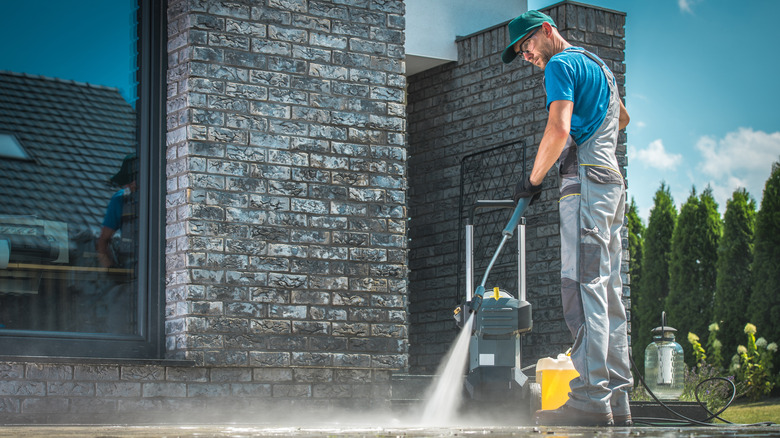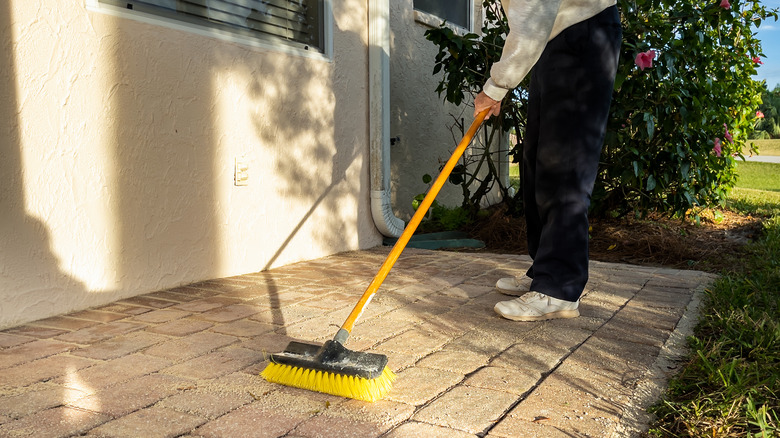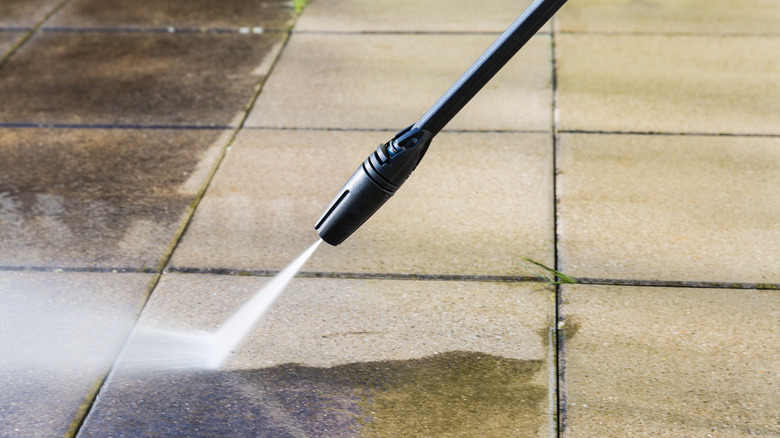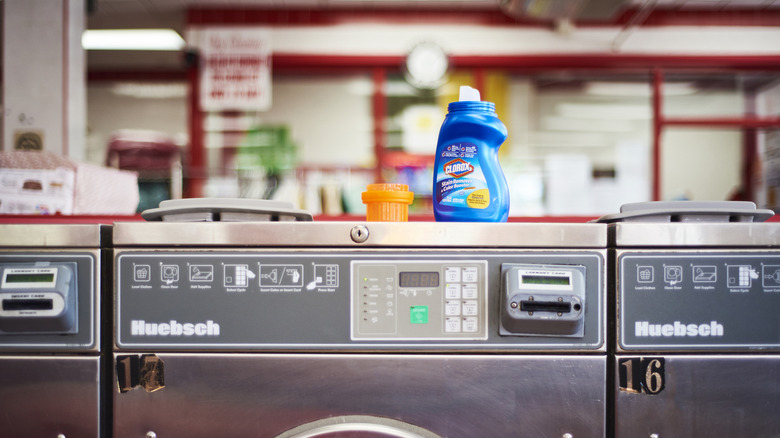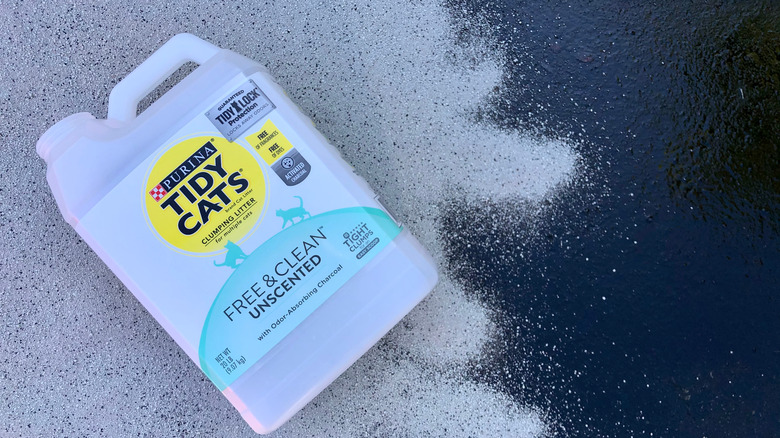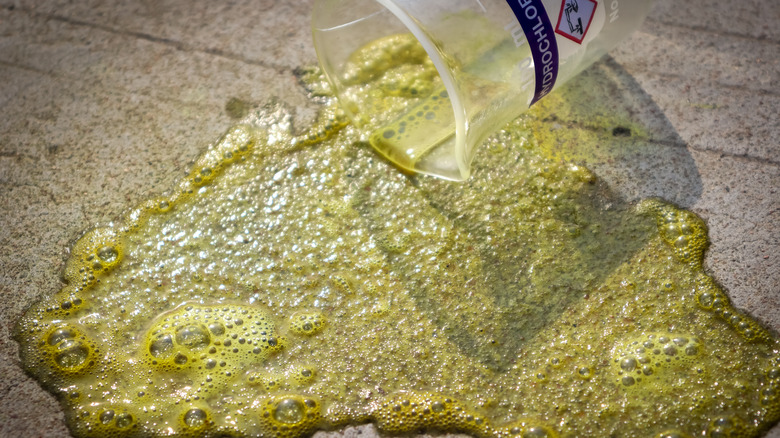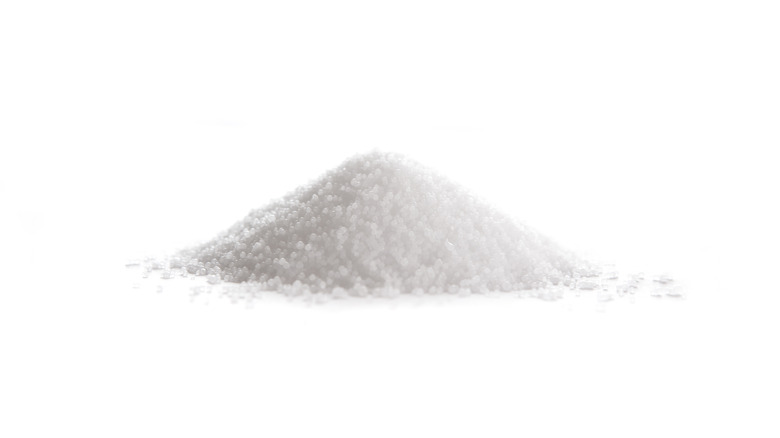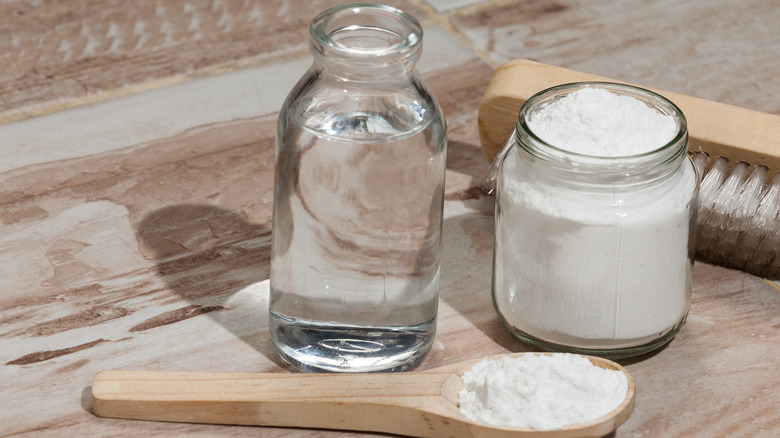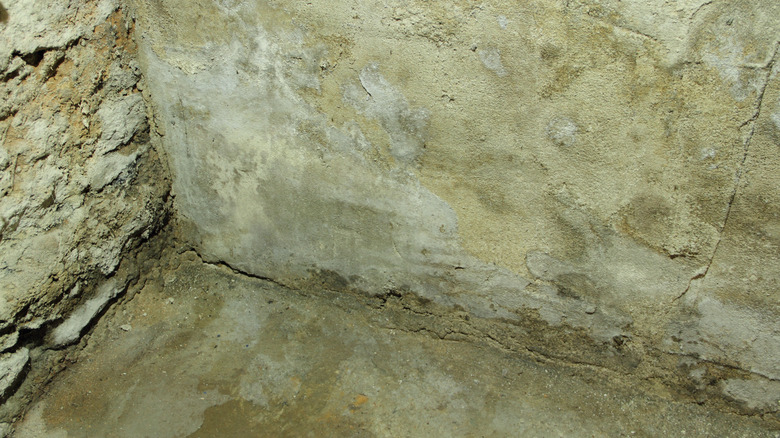8 Easiest Ways To Clean Concrete
Concrete can add an affordable and durable feature to your outdoor landscape. Whether a simple concrete slab or driveway or a pressed concrete pattern, the biggest downside is that concrete can get dirty. Even using concrete pavers, dirt, moss, and mildew can still be an issue with maintaining your patio or driveway. Maintenance becomes even more difficult when you add home improvement projects like painting or automotive work, such as removing spray paint or cleaning up after spilled oil.
Beyond looking great, proper cleaning of your concrete can help assistant with maintenance, according to Concrete Network, including sealing the concrete and crack repair to ensure your outdoor area lasts a long and beautiful lifetime. Fortunately, there are many tried and true techniques to help keep your concrete looking clean and new.
Cleaning concrete can be done at all skill levels following manufacturer and safety guidelines. Test out these methods for regular cleaning and heavy-duty scrubbing and stain removal.
1. Sweep and mop concrete
Treat your concrete like an extension of your kitchen floor, and grab your mop and broom and give the area a good once-over, per SF Gate. Concrete can be swept with any broom, but for rougher surfaces you may prefer an outdoor broom with stronger bristles. If you use the same broom both indoors and outside, make sure not to track in any rocks or outdoor debris that could damage or scratch your interior floors.
Mopping your concrete can be done with traditional cleaning tools, although many prefer the cleaner and scrub brush method. That's because sponge mops may not last long with outdoor use. And while concrete can handle some harsher chemicals, it's important to remember that your surrounding wastewater ecosystem and landscape may not. Check for a gentle cleaner that is safe for animals and vegetation for standard cleanings like those offered at your local yard and garden store.
2. Pressure wash concrete
Pressure washing is a fantastic way to remove just about any debris from your concrete — or any other part of your home for that matter. By creating adjustable sprays of high pressure water, these machines can achieve with physical force a cleaning that would otherwise require increased chemical use. Follow the manufacturer's guidelines on operating your specific pressure washer model and begin with a lower pressure nozzle to test out your most effective level of pressure.
Family Handyman recommends laying tarps over nearby grass or plants that might be damaged by high pressure spray. After taking those precautions, choose your selected nozzle for concrete or patio cleaning, usually a mid-level spray choice. Avoid holding the nozzle head-on at targeted areas, as doing so can cause damage to paint or finishes, so instead spray at an angle. Use pressure washer soap or cleaner and rinse when finished.
3. Clean with hot water and laundry detergent
Another take on the standard sweeping and mopping method, hot water and laundry detergent are both likely things you have already at home. Laundry detergent is a mild cleaner that can avoid some of the risks of harsher chemicals too — after all, we use it on clothing for all members of the family, from young to old.
This Old House recommends spot treating stains with laundry detergent and following up with a non-metal brush before rinsing, such as a scrub brush or sturdy broom. The process is very similar to treating grass-stained clothing, but the stain happens to be on a much larger and more rigid surface. You'll want to let the detergent sit for at least 10 seconds, the apply elbow grease and rinse thoroughly.
Feel free to follow up with a regular mopping if you'd like to clean the area; just remember to rinse thoroughly and remove any soap residue before applying different cleaning chemicals.
4. Use absorbent materials for oil stains
One of the most common stains on a driveway is oil. Unlike other stains, oil can be resistant to certain cleaners, and spraying it down the driveway isn't very environmentally friendly. Instead, Today's Homeowner advises you to grab some kitty litter — any kind will do. Take something heavy (like a brick) and crush the kitty litter into a fine powder, the finer the better. Spread this powder over the oil stain or spill and leave it. You can remove the litter within about 15 minutes for smaller stains or surface spills, but let it set overnight for set-in stains.
Using a broom and dustpan, remove the powder after it has absorbed the mess and dispose in the trash. If you have extra litter but no kitty, remember that this can be handy for gaining traction on snow and ice as well — with the bonus of being safe for pets and animals nearby.
5. Dissolve tough stains with Muriatic acid and Trisodium Phosphate
Muriatic acid and Trisodium Phosphate (TSP) are seriously hardcore methods for cleaning concrete. These acidic preparations take more skill and concentration than some of the other techniques shared, too. Both items can be purchased at your local home improvement store and will need to be diluted with water, and applied using gloves and preferably a ventilation mask for safety. Popular Mechanics suggests mixing 1 part muriatic acid with 10 parts water, neutralizing any stains for at least 10 minutes, then rinsing with a diluted ammonia water solution for concrete etching or paint preparation.
TSP should be mixed as 1/4 cup of concentrate to 1/2 cup of concentrate mixed with 1 gallon of hot water according to Hunker, then rinsed with a hose. Caution — when using potentially corrosive or irritating chemicals, make sure to follow the manufacturer's guidelines. Do not mix chemicals at home.
6. Try a concrete alkaline degreaser
Just like your kitchen floor, concrete can get different kinds of dirt, oil, and stains. One popular cleaner to address these various types of stains is using an alkaline degreaser. A common degreaser you'll find in your home is liquid or powdered dish soap, which SF Gate recommends to cover the stain and then scrub. Work the soap into a lather over an oil spot and then blot the mess away. Rinse and clean as normal.
Concrete Network also recommends a number of commercial degreasers as both effective and economical, explaining that the alkaline cleaner will help bring the pH of the concrete surface back from acidic to alkaline again, which is the concrete's natural state. These professional degreasers can also be used to neutralize concrete after an acid staining or acid cleaning. The biggest thing to remember is that depending on how far the stain has penetrated, these cleaners can take a while to work.
7. Scrub with vinegar
If your first concern is the toxicity of concrete cleaning chemicals, vinegar and baking soda will leave your home feeling bubbly and fresh. The experts at Wolf Paving recommend mixing a bottle with equal parts water and vinegar or water and baking soda and adding a dab of that handy dish soap. Spray the concrete and wait 30 minutes before cleaning.
While vinegar and baking soda are excellent natural cleaners, you may still need to directly address stains or spots with a different listed method. Additionally, House Tipster advises using caution on polished concrete floors, as the acidity in the vinegar may strip away at this protective coating, so save this one for the unfinished concrete areas. This same advice goes for marble and stone countertops as well. Vinegar may be safe for use around humans and animals, but over time it can damage sealants on other materials.
8. Remediate mold and mildew
Mold can grow on concrete, especially in areas that are prone to moisture and wetness, like basements. Additionally, certain molds can cause significant health issues for you and your household, so if in doubt make sure to check with a professional.
If you are comfortable removing mold yourself you can tackle the problem with some protective equipment and effort. Don your gloves, goggles, and mask and dilute bleach into a bucket of water, using at least 1/2 cup per gallon of water, according to Black Mold Control. Scrub the affected area whether indoors or outside and rinse thoroughly. Make sure to remove all bleach residue before applying additional floor cleaners once the mold is gone.
As a reminder, never mix bleach and ammonia as this can cause a potentially deadly chemical reaction. Use these mold-killing chemicals only as directed by the manufacturer or a professional (via Healthline).
